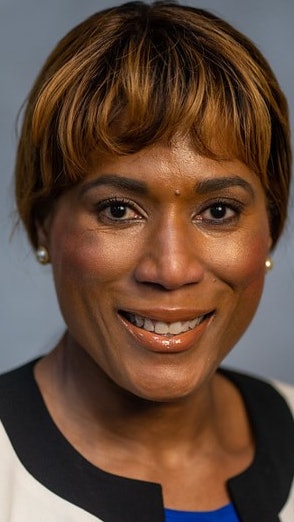 Dr. Tyjaun A. Lee
Dr. Tyjaun A. Lee
According to a report by the National Student Clearinghouse Research Center (NSCRC), total postsecondary enrollment, including undergraduate and graduate students, decreased by 4.1% — equal to about 685,000 students — in spring 2022 compared to spring 2021. Overall postsecondary enrollment now stands at about 16.2 million students. The deepening slide dashed hopes that the worst of the pandemic-era enrollment erosion was over and — instead, raised concerns that other factors such as growing skepticism over the value of college — may be keeping students away.
Undergraduate enrollment decreased by more than 662,000 students, or 4.7%, from spring 2021, bringing its total two-year decline, roughly corresponding to the period of the COVID-19 pandemic, to 1.4 million students, a decrease of 9.4%. The decline was even steeper than the 3.1% decrease in undergraduate numbers seen last fall.
When I first arrived in Kansas City, the newly hired chancellor, Dr. Kim Beatty, was on a mission to ensure that Metropolitan Community College (MCC) was top of mind in the community. During meetings with local superintendents, she shared her vision to expand the Early College Academy model by reducing the cost of tuition by 50%. MCC has an Early College Academy model in which high school students can earn both their diploma and Associate of Arts degree simultaneously.
The high school years are critical for students looking to attend college or to find a career. It is important to note that many jobs today require a postsecondary degree. This is why dual enrollment programs matter. While the definition varies depending on institution and partner, the mission is the same: to prepare students for success. The program at MCC began after former Superintendent of Kansas City Public Schools (KCPS), Dr. Mark Bedell, shared an idea he had to serve the marginal middle; those students that have dropped out of high school, public or charter. He proposed that instead of returning the students to their home school, they would come to a community college to complete their diploma and get a college degree. The program would be a partnership between the Metropolitan Community College- Penn Valley Campus, Full Employment Council, and Kansas City Public Schools.
The program, born in January 2018, is designed for individuals 16 to 24 years old. When students apply to the program, they also apply for enrollment at MCC. Students receive an MCC ID, which gives them access to all MCC- Penn Valley programs and services. The program boosts their academic skills and also immerses them in the collegiate environment. Students receive wrap-around services from partners to ensure they complete the program. These services include, but are not limited to, financial, transportation, food, and technology. As students complete the program, they are offered a full scholarship to attend MCC upon graduation.
Initially, the program was only offered during the day, but after assessing the needs of the students, it was determined that an evening option was needed because many worked and were caregivers. The program was then expanded and three new KCPS employees were added. Since the program’s inception, 296 students have graduated and 108 of those students enrolled at MCC. This program provides some hope that the tide may be turning. Another reason to be hopeful is, in the National Student Clearinghouse Research Center report, nearly 340,000 freshmen enrolled for the first time this spring, with almost six out of 10 starting at a community college. Community college freshmen increased by 6,000 students or 3.1%, after a decline the previous spring of 23,000 students, a 10.7% loss.
As community colleges look to the future and how to best serve the communities that surround them, dual enrollment programs have proven to be critically important to the mission: to be a space where people from all walks of life can pick up new skills or talents flexibly and at a lower cost. Nationwide, dual enrollment programs have delivered impressive results such as improving academic achievement, high school graduation rates, and college enrollment after high school. It is vital that community college leaders identify partnerships to assist in creating more programs such as these to make college more accessible and to better prepare students to impact their communities positively and effectively.
Dr. Tyjaun A. Lee serves as president of Metropolitan Community College-Penn Valley Campus (Mo.).
The Roueche Center Forum is co-edited by Drs. John E. Roueche and Margaretta B. Mathis of the John E. Roueche Center for Community College Leadership, Department of Educational Leadership, College of Education, Kansas State University.
















